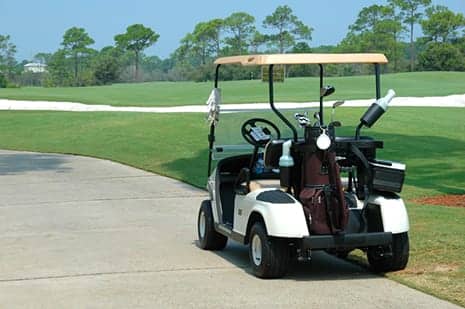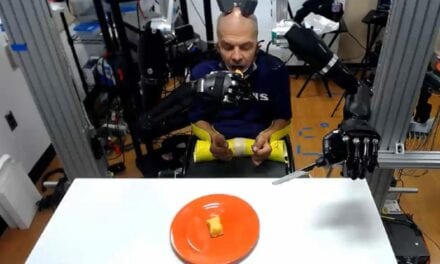Among golfers with knee osteoarthritis, walking the golf course rather than riding in a golf cart provides significantly higher health benefits and is not associated with increased pain, cartilage breakdown or inflammation, researchers suggest.
The study, from researchers at Shirley Ryan AbilityLab and Northwestern Medicine, is reportedly the first that comparies the health benefits of walking the golf course versus using a cart, as well as the first to use a blood-based biomarker analysis in knee osteoarthritis during a prolonged sporting event, according to a media release from Northwestern University.
“Individuals with knee osteoarthritis are often concerned about pain and may be more likely to use a golf cart,” says lead study author Dr Prakash Jayabalan, a physician scientist at the Shirley Ryan AbilityLab and an assistant professor of physical medicine and rehabilitation at Northwestern University Feinberg School of Medicine.
“However, through sophisticated blood-based biomarker analysis, this study has shown that golfers with knee osteoarthritis do not need to be concerned about worsening their disease through walking the course. In fact, walking provides the best health benefit,” she adds, in the release.
The study, completed in partnership with the Glenview Park District Golf Course in Glenview, Illinois, involved 15 participants—10 who had knee osteoarthritis and five who were of similar age but did not have the disease. Participants played 18 holes (one round of golf) walking the course and, on a separate day, the same individuals played a round riding a golf cart. The research team compared their heart rates to determine the intensity of exercise performed and took blood samples during each round to measure markers of cartilage stress and inflammation.
The researchers found that, prior to starting either round, the golfers with knee osteoarthritis had an average pain score of 1.3 (on a scale of 0-10). When they played the round walking the course, they had an average 2.1-point increase in pain score. When they played the round using the golf cart, they experienced on average a 1.5-point increase, a difference that is not clinically significant.
The research team also measured blood-based biomarkers of cartilage stress and inflammation. Although both methods of transportation caused an increase in these markers (as would be expected with regular walking), there was no difference between the rounds, the release explains.
When walking the course, golfers with knee osteoarthritis spent more than 60% of the round with heart rates in the moderate intensity heart rate zone. When driving on a cart, golfers spent 30% of the round in this range. While this figure is lower, it still fulfills daily exercise recommendations.
Although walking the course offers the most significant health benefits, the study found that riding the course with a golf cart during a round—and the requisite moderate walking that comes with it—still offers cardiovascular benefits and helps fulfill daily exercise guidelines.
“Bottom line: walking the course is significantly better than using a golf cart, but using a golf cart is still better than not exercising at all,” says Jayabalan, the release concludes.
Findings from the study were presented recently at the Osteoarthritis Research Society International Annual Meeting in Liverpool, England.
[Source(s): Northwestern University, Science Daily]





